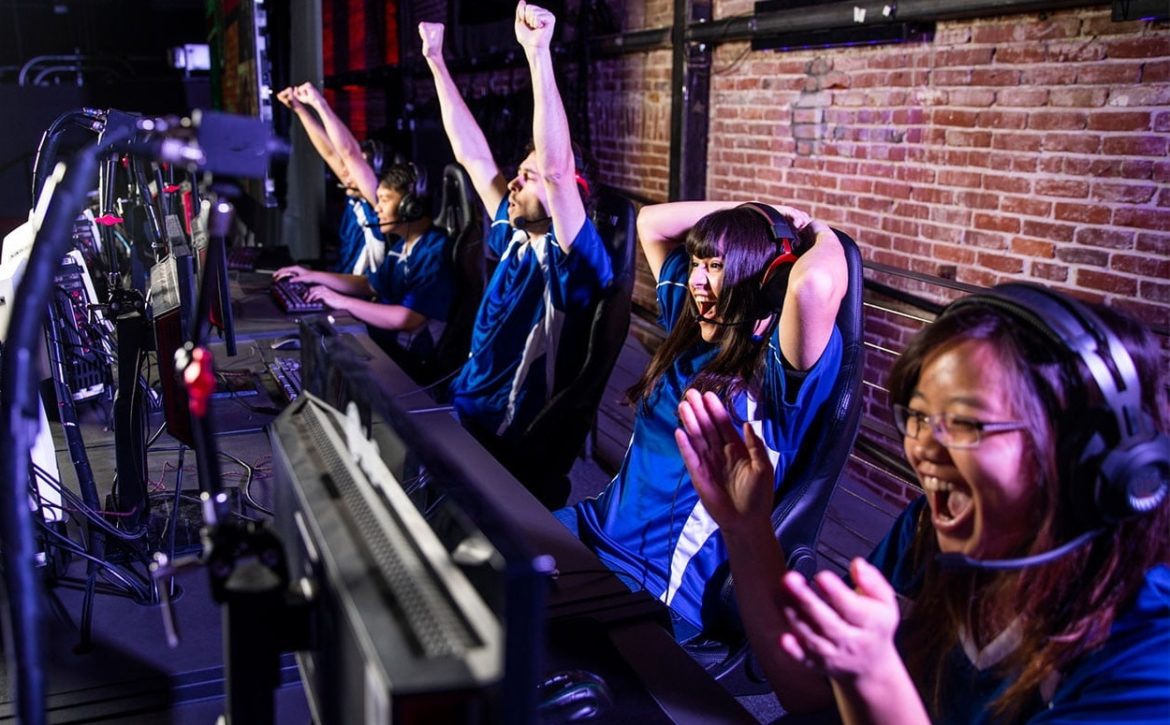The Rise of Esports, How Data Drives It, and What the Future Looks Like
Electronic sports, or esports is the evolution of online competitive gaming into spectator sports. It started off as a niche industry but over the last decade, it has become a major player in the sports and entertainment industry, and even become a part of mainstream culture. Viewers can watch video gamers compete against one another in a virtual environment just like how they’d watch a professional sports event. In 2021, the global esports market was valued at just over $1.08 billion, an almost 50 percent increase from the previous year.
The first-ever esports competition took place at Stanford University in 1972. Five students competed in an “Intergalactic Spacewar Olympics,” and the winner received a year’s subscription for Rolling Stone. Dota 2’s The International 2019 invited the top players in the world to a tournament with a crowdfunded prize pool of $34.3 million. Less than a year before that tournament, CNBC reported that the “League of Legends” World Championship finals in South Korea hit nearly 100 million unique viewers, eclipsing the previous year’s Super Bowl, one of the most popular sports championships which had just over 98 million viewers.
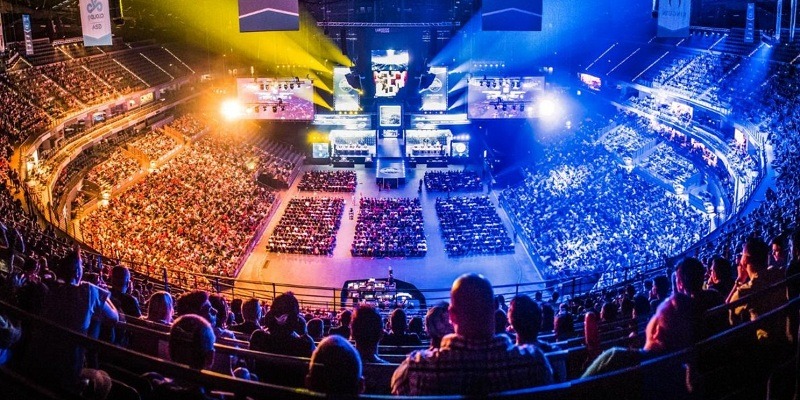
Esports has only grown bigger with the 2020 Covid-19 pandemic. With people being confined to their home and the usual sports tournaments not happening, they turned to virtual game tournaments increasingly for entertainment. Across European countries, 38 percent to 67 percent of esports consumers stated that they watched esports for the first time after COVID-19 related restrictions were imposed.
The potential to earn from gaming has become increasingly tantalising as there are several ways to do so. Most obvious is the prize money from tournaments, but esports athletes can also make millions of dollars from streaming their live gameplay, signing contracts with big organisations like TSM, 100 Thieves, Team Liquid, and the like, engaging on social media, and sponsorship deals with entities both within and outside the gaming sphere such as Redbull, Corsair, and AimLabs. Everyone can benefit from esports- the players, the audiences, and corporations.
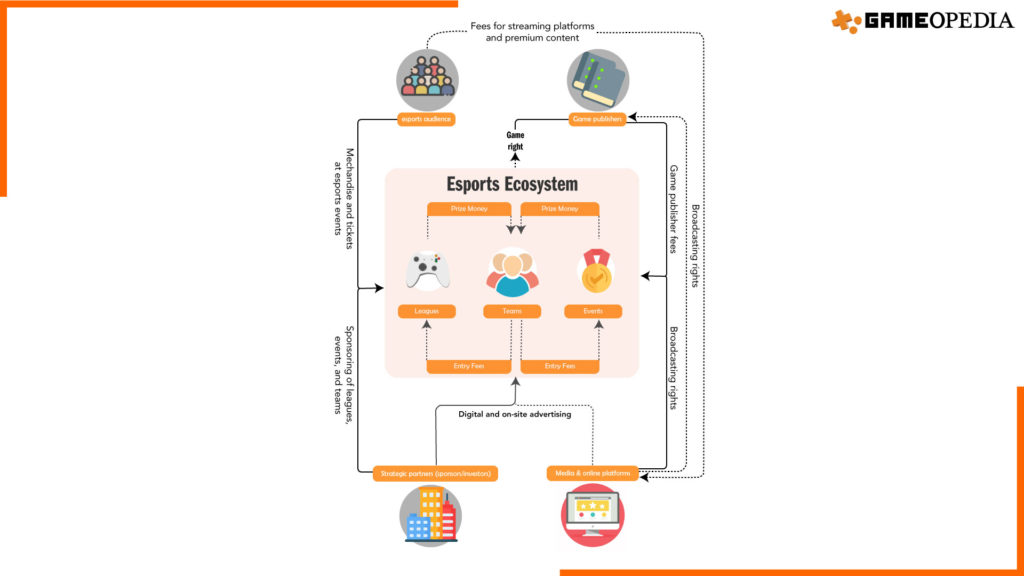
Several technology, analytics, and service platforms are also beneficiaries of this ecosystem as it continues to grow in leaps and bounds from increasingly substantial investor capital. The largest sponsorship deal to date was TSM receiving $210m over 10 years from crypto exchange FTX.
The Esports Industry: Who is Involved?
Esports involve several parties who make the ecosystem thrive. These include:
Players:
They develop their skills through extensive, competitive play. They train for quick reflexes and multi-tasking abilities, often for several hours a day. Those who rise to the professional level compete in tournaments all around the world against the best teams. They gain a fanbase for the teams and organizations they play for as well as themselves as they grow. Retired esports professionals may opt to stream themselves, coach esports teams, start their own team, work for publishers, and more. Some of the most skillful and consistent players often end up being the face of the game, such as Faker in League of Legends.
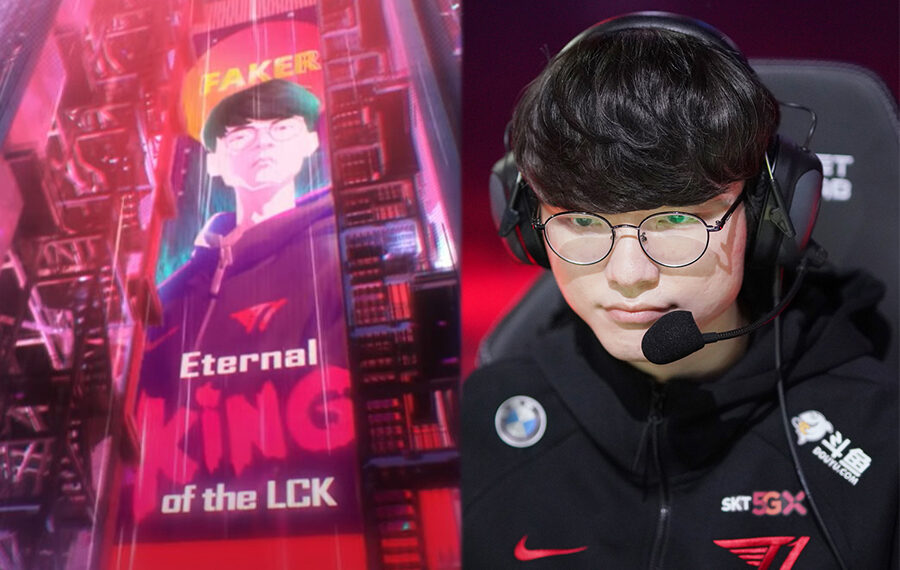
Streamers:
Gamers who livestream themselves as they play video games are referred to as “streamers.” This is typically done in casual play but professional players also stream their ranked games or do analysis of their gameplay to educate and entertain their viewers. While streaming can be incredibly profitable, many streamers have to decide whether they want to stream for a living or try and play professionally and run the risk of making less money. With that said, not all streamers have the skill to play professionally. Instead, some simply have “streaming personalities” that viewers find entertaining to follow, donate to, and subscribe to. Some examples of these are Ninja, Valkyrie, Pokimane, and PewdiePie, who all have several million subscribers on platforms like Twitch and YouTube.

A great example of how much streamers make just off streaming platforms is Ninja. Ninja, or Tyler Richard Blevins, is a professional gamer who became a global phenomenon in 2017 as a result of his Fortnite streams. Ninja had more than 17 million followers on Twitch by the end of November 2019, making him the most followed Twitch streamer by a long shot. He’s best known for streaming Halo Infinite, Fortnite, and Halo 3. His estimated revenue from just streaming is about $25 million, though his income is far more than that considering the many sponsorships and partnership deals he’s signed.
Teams:
When you think about esports, depending on the game, several teams come to mind. If you follow CS:GO for example, Astralis and NaVi are names you’ll definitely know. When it comes to VALORANT, teams like Team Liquid, Cloud 9, Sentinels, and the like are known by those who follow the competitive scene. Traditional sports teams and athletes alike have also taken an interest in esports, with Shaquille O’Neal’s co-ownership of NRG Esports and FC Barcelona’s Rocket League and eFootballPES 2020 teams.
All of these teams are usually funded by large organisations and tend to specialise and compete in one specific game, such as League of Legends, Dota 2, or Counter-Strike. Note that organisations can often have several teams, each for a particular game. The teams that compete at these tournaments often have millions of followers on Twitter, millions watching online, and tens of thousands of spectators following them to in-person tournaments.
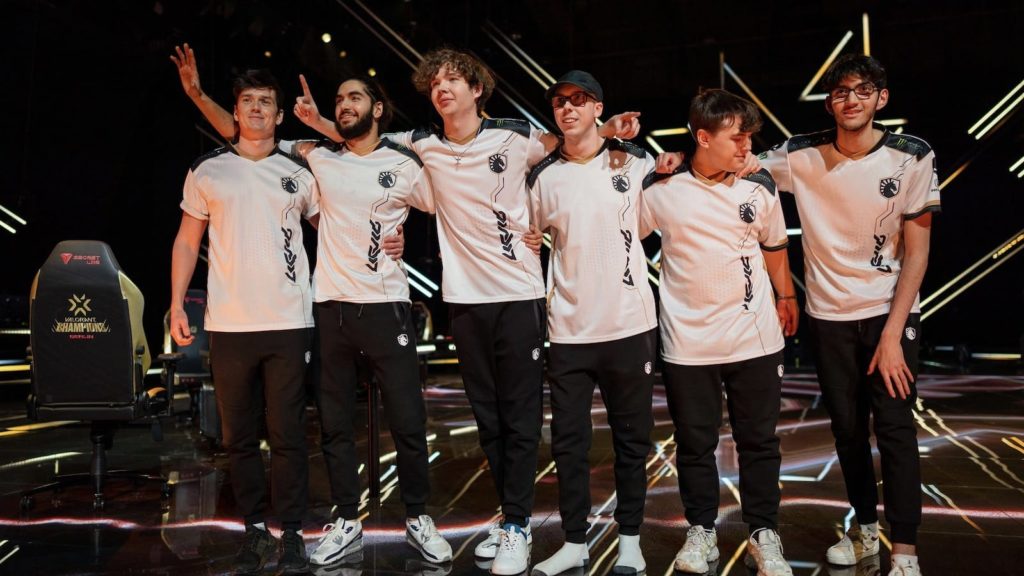
Organisations:
The best esports teams are recruited to be a part of organizations and have several teams that specialize in their respective video games but operate under the same name. Examples of these include Cloud9, NRG, TSM, Optic Gaming, and Fnatic.
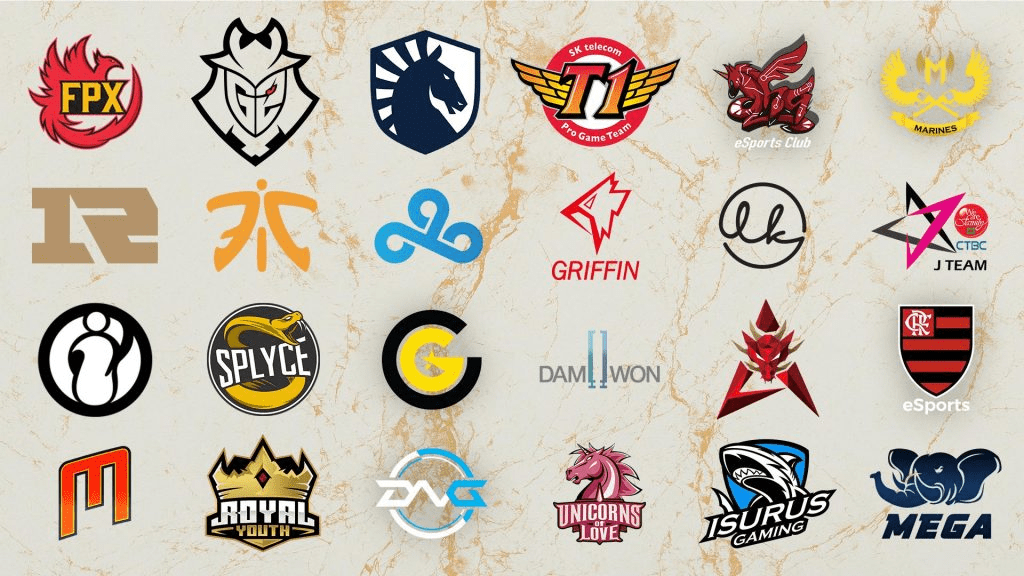
Leagues and Tournaments:
Esports teams which can be free agent teams or representing an organisation compete in leagues which have regular seasons and championship events, often international. A great example of this, which has remained popular for over a decade is the League Championship Series or LCS for League of Legends.
Developers/Publishers:
These are the people who build and develop their games and subsequently own all rights surrounding them. This means that they have rights around where the game is played, who can host video game tournaments, and more. Examples include Valve who owns CS:GO and Riot Games who own League of Legends and VALORANT.
Other Important Entities:
These are essential to the esports industry and also benefit from it. They can be divided into:
- Platforms and Infrastructure: These include tournament platforms like Battlefy and communication tools such as TeamSpeak and Discord which make esports easier to plan and perform in.
- Livestreaming Resources: These are live streaming platforms which include highlights, old VODs, and analytics which can be monetised by streamers. In particular, Twitch is one of the most popular streaming sites for esports. It was acquired by Amazon in 2014 for $970 million and reached close to 5 billion total hours streamed in 2016.
- Betting and Item Marketplaces: Esports gambling, fantasy leagues (with pro-esports athletes), and item marketplaces for in-game customization have grown significantly in the last several years. Recently marketplaces have also started selling NFTs- a good example of a marketplace which does sells skins, game items, as well as NFTS is dMarket.
- Aspiring Pro Gamer and Fan Resources: This could be everything ranging from news sources, industry statistics tracking, coaching, and skill improvement tools for professional and casual players. Websites like Game Rant and PC Gamer help keep people up to date with the latest gaming industry news. Sites like metafy.gg offer coaching sessions from top professionals in the game to those wanting to improve.
Data in Esports:
Like any other industry, data can be used to significantly enrich and improve esports by helping with developing applications and systems which can benefit the gaming ecosystem. Data is vital to every aspect of the esports ecosystem. Whether it happens to be streaming analytics, player statistics, or other tools and platforms, esports can’t function without data. Data directly economically benefits the market and helps its growth. Some of the ways it does so includes:
Statistics tracking for players:
There are multiple platforms online, free and paid, that allow players to know details of their favourite games, which were traditionally quite difficult to gather and visualize. They can help players make better decisions by understanding their mistakes, see their performance trends over time, and see where they stand compared to other players or even professionals.
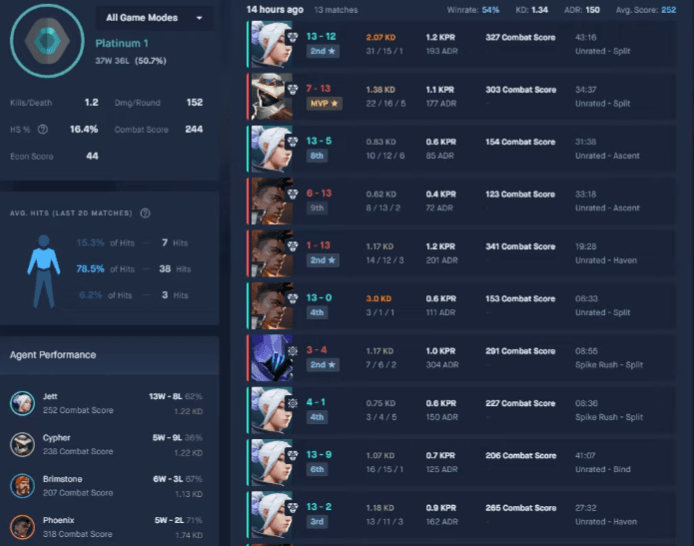
These tools work similarly to typical digital dashboards that you can find in the day-to-day operation of any leading company performing basic business intelligence. Data is obtained from one or more sources (in this case from all video game servers) and through the use of a series of data processing and model development mechanisms, visualisations are generated in order to retrieve insights for better decision-making in the next games. The result is that players can improve their performance which in turn benefits the competitive scene and generates more hype.
For audiences:
Data visualisation has become key to enhancing viewer experience during live broadcasts as it allows inexperienced participants to follow the game.

Data is shown on the screen in different tables and graphics during the broadcast, and it is possible to observe in real-time how the most relevant metrics fluctuate during competitive matches. You can also do an analysis and breakdown of good plays from a particular match which can help all viewers understand the game better.
Tournament schedules and information:
This data can help keep track of tournaments happening, the teams and players participating in them, prize pools, dates for matches, registration details, and past events, among others.
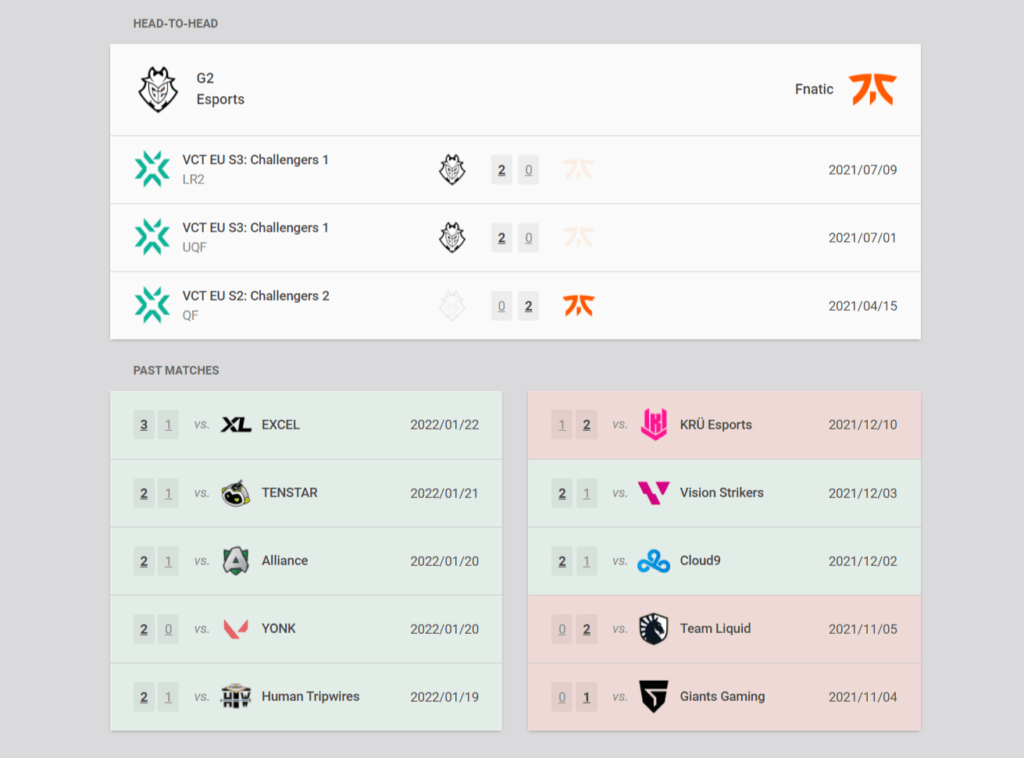
The bot system:
Bots are simple forms of AI that simulate the movements and actions of a human player. These virtual players are used to help new players to get up to speed with the mechanics of the game before facing other more experienced players or as a warm-up or practicing tool for more experienced players.

The reporting system:
This is a tool that penalizes players for cheating, toxicity, and other actions which negatively impact a game based on historical in-game data collected. If a player receives a high number of reports from others, or the system counts several leaves from the game, they will be automatically banned from the system and prevented from being able to play for some time. ML models are applied which will increase this “punishment time” if the player persists with their bad behaviour.
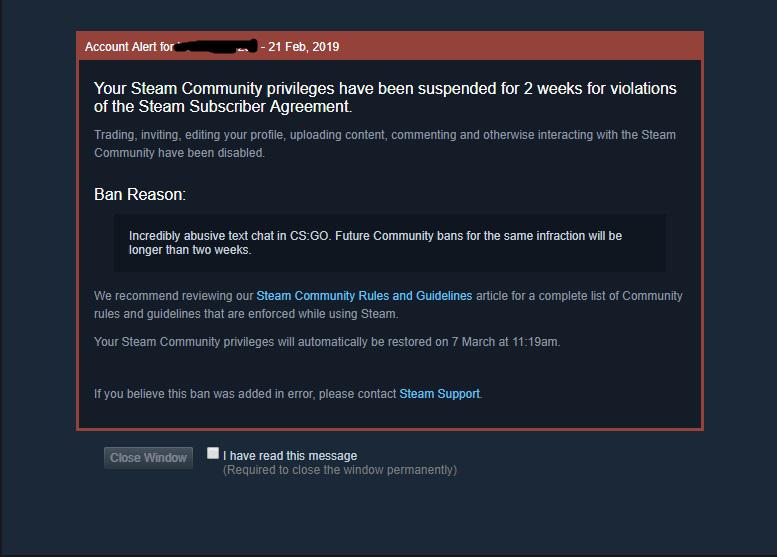
Revenue in Esports
Revenue in esports flow through various channels. The most well-known is revenue related to leagues and tournaments such as prize money and entry fees. Other revenue streams include:
- Franchising:
In franchised leagues, the franchiser- in this case, the game publisher- offers a select number of available spots. Each spot in a league comes with a certain price tag. After buying into a franchised league, a franchisee will earn the perks of being a permanent member. Following a regular season of match-ups, points are tallied up to generate a bracket for a final post-season battle to determine the champion. Activision Blizzard started the Overwatch League in 2018, after selling 12 franchise slots in 2017 heading into the inaugural season — with franchise fees reported to be $20 million. Riot Games sold 10 franchise slots for its North American League of Legends Championship Series in 2017 for $10 million to existing teams and $13 million for new teams. - Media and broadcasting rights:
Broadcast media rights have become a major part of revenue generation for major esports leagues and titles as they look to create a sustainable ecosystem and revenue model that will provide a substantial return on their investment. Before Activision Blizzard’s franchise Overwatch League started, Twitch reportedly paid $90 million to stream the first two seasons of the league.
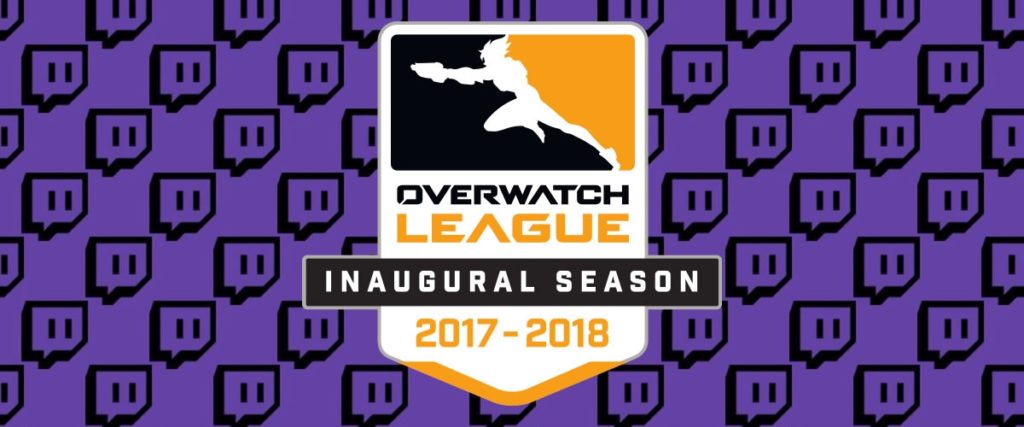
- Advertising:
Marketers are hoping to reach the throngs of fans who like to tune in live as professional gamers battle each other in their favorite game, be it League of Legends, Overwatch or others. In 2019, 30.3 million people in the United States will watch an esports event at least once a month, a more than 18 percent increase over last year. Esports digital advertising in the United States generated a revenue of $175 million in 2019. What is more, the figure is expected to further grow and reach $226 million by 2021. - Sponsorships:
In 2019, out of the total esports revenue of $1.1 billion, sponsorships contributed $667 million in revenue, which was the largest chunk. Revenue from esports sponsorship is estimated to reach almost $600 million globally by 2023. ESL’s ongoing 20-year partnership with Intel was renewed again. Commencing in 2022, both entities have committed to investing $100 million in esports between 2022-2025. - Tickets:
At just over $100 million in revenue in 2018, ticket sales don’t occupy the same role that they do in traditional sports, especially after the pandemic when virtual and free broadcasting of tournaments gained traction. - Merchandising and partnerships:
Beyond tickets, esports organizations and streamers have made a business of selling merchandise such as t-shirts, jerseys, and even special editions of gaming peripherals. Logitech introduced the new PRO Series Shroud Edition, a suite of Logitech G’s most advanced gaming peripherals they launched in collaboration with Michael “shroud” Grzesiek who is one of the most beloved streamers who is known for his excellent aim. Shroud’s extensive fanbase would definitely be among those who would be interested in these peripherals.

The Future
The esports industry’s global market revenue was forecast to grow to as much as $1.62 billion by 2024. Some of the trends we are already seeing and can look forward to include:
Growth of mobile esports:
Mobile phones are becoming increasingly cheaper and technologically advanced. Mobile games have some of the lowest barriers of entry when it comes to gaming and this has captured millions of esports fans around the globe. Most people have smartphones, and mobile games typically have low hardware requirements, helping mobile esports flourish. In 2020, the global mobile gaming content market was worth $121.1 billion and is projected to reach $169.7 billion in 2025 with Asia generating the most revenues in the segment. As of August 2021, there were 5.3 billion mobile gamers around the world, with Asia accounting for over 1.29 billion mobile gaming users– more than 48 percent of the global mobile gaming audience.
The access to good quality internet has also significantly increased over the last years and has made mobile esports play more stable and viable. With over $21.9 billion in gross revenues, RPG games were the top mobile gaming app genre worldwide in 2020, growing 19 percent compared to the previous year. Strategy apps were ranked second with a global gross revenue of $15.1 billion during the measured period.
Free Fire and PUBG Mobile are among the battle royale genres’ most popular games available on mobile. It’s no coincidence that these titles are extremely popular in emerging markets and the esports scene for these games is worth several million dollars. PUBG Mobile’s clone, BGMI, has proved extremely popular in India. Four months after the release of the game, BGMI has acquired $7 million via in-app spending. The title has been downloaded over 50 million times on the Google Play Store.
Blockchain and NFTs:
Teams and organisations are trying to find ways to directly monetise their fanbase and are looking at blockchain technology and NFTs to achieve this goal. Esports fans are already used to buying digital goods such as skins, in-game currencies, and the like, and are also more accepting of new technology. Unlike normal NFTs, esport NFTs focus on innovating loyalty amidst their fanbase by creating exclusivity. Fans can earn digital rewards on the blockchain when they engage with an organization’s content or buy NFT artwork of the team or players. These are tradable and can increase in value over time. Initial exclusive fan tokens can also make raising investments easier for esports organisations. In July 2021, European esports juggernaut OG Esports revealed that it was going to enter the NFT fray and the organization was able to rake in a cool $1 million via the sale of just three digital artwork collections, putting them just behind Team Liquid on the esports earnings leaderboard.
Esports betting:
The digital nature of esports puts it in a unique position in the betting space. Every in-game action and movement can be captured as data points from the game’s servers. The global esports betting market size is expected to reach $13.05 billion by 2025, from $7983.2 million in 2019. The number of esports events one can bet on is also growing exponentially, from 3,000 events available in July 2019 to over 50,000 events in July 2020.
The main problem with esports betting when compared to normal sports betting is latency. To be able to create a real-time betting experience, real-time data directly from the server is essential. If someone offers odds or streams faster than the esports video feeds, it could lead to the entire system collapsing. Another big issue the industry faces is integrity. Some betting providers haven’t sought the best gambling licenses and others have been banned by governments in different countries.
Integration of esports into education:
Several universities around the world have realized that esports is a viable career option and have started offering degrees which specialise in the field. Some of these include:
- The University of Portsmouth offers an Esports Coaching & Performance degree and has partnered with the International Federation of Esports Coaches in order to train the next generation of esports coaches.
- The Confetti Institute of Creative Technologies, part of Nottingham Trent University, offers a BSc (Hons) degree in esports production.
- Shenandoah University offers a Bachelor of Business Administration Concentration in Esports Management which prepares you to be a leader in the field of esports management by providing a robust business background with a focus on the business of esports.
There are also scholarships available for esports players. Recently, the Ontario Government launched a $1m CAD scholarship program for students enrolled in esports and other industry-related programmes.
Esport organisations sponsoring technology platforms:
Another way esports organisations have found to bolster their revenue and also gain better metrics about how their players are performing are the acquisition of technology companies working with esports data. A good example of this is TSM, whose parent company Swift Media Entertainment acquired esports coaching and analytics company Blitz. Similarly, T1 invested in the esports analytics startup Mobalytics in 2020. In addition to acquiring new businesses, Swift Media Entertainment also incubates its own ventures, such as the talent agency ICON.
Content Expansions:
Release of content related to video games in other forms of media can greatly benefit the game and publisher. Riot Games is probably the best at doing this, with their various releases centered around their IPs.
For their game VALORANT, which was designed to be an esport, they have a year-long group of tournaments called the Champions Tour for which they’re constantly releasing content. Whether its videos featuring individual agents from the game, interviews with professional teams and players, or just really cool music videos which generate hype for the game, Riot does a great job of building interest in the game amidst a wide group of people, including those who might not follow the esports scene.
Another example of using media to generate interest in esports which also sets an example for similar future IPs is Arcane, a show released on Netflix which is based off of characters from League of Legends.

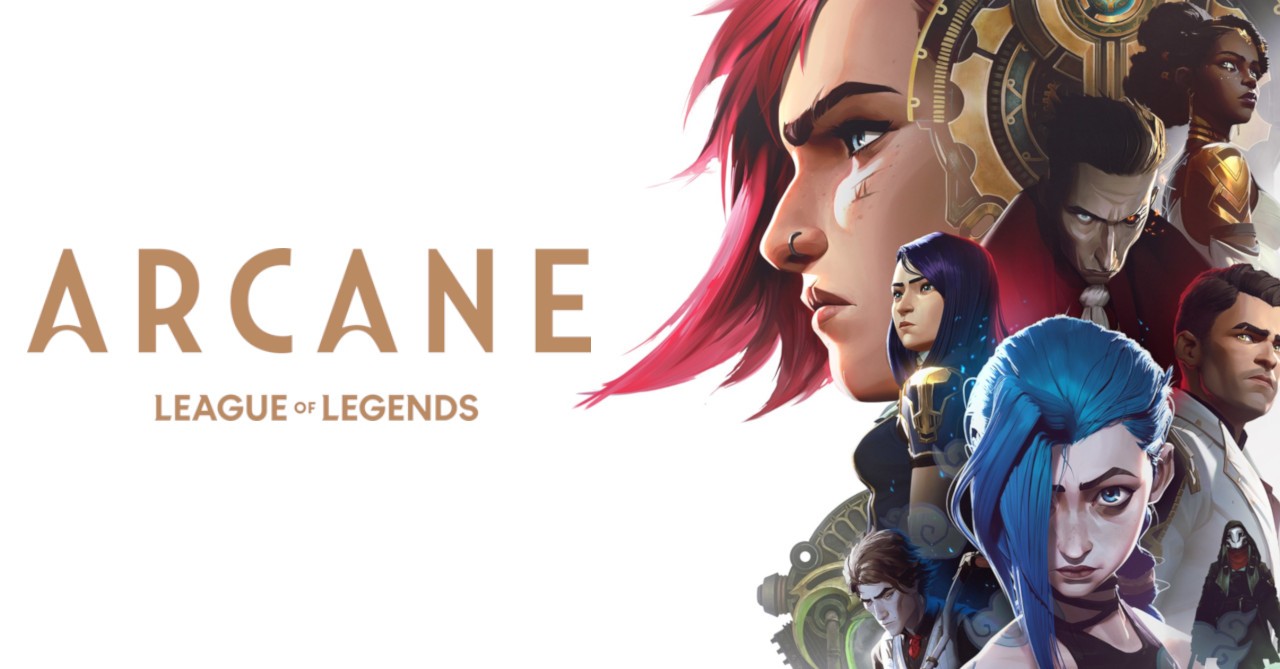
“Arcane” is bringing new fans to the League of Legends IP while also reigniting the passions of its longtime followers, serving a uniquely wide audience and expanding League of Legends’ cultural impact. Riot Games also promoted it in their other games like VALORANT by giving players free in-game items as well as releasing a new weapon skin. They also released skins for characters from the show in Fortnite, another popular game.
Outside of Netflix, the series is also a hit in League of Legends, with champions that feature in the show getting a significant boost in pick rate since Arcane launched. The sisters Vi and Jinx, who take up a substantial amount of Arcane’s screen time, saw a significant uptick in their pick rates.
As you can see, esports is an industry with an almost explosive growth trajectory. Whether you’re a professional player, a team owner, media partner, or casual spectator, the opportunities for success and profit are both numerous and significant. By obtaining and analysing data, you will find it easier to find success in your goals.
At Gameopedia, we work with clients on custom requests and can provide in-depth data on any subject related to gaming and esports. Reach out to us to get access to esports data that can empower you to new heights.

